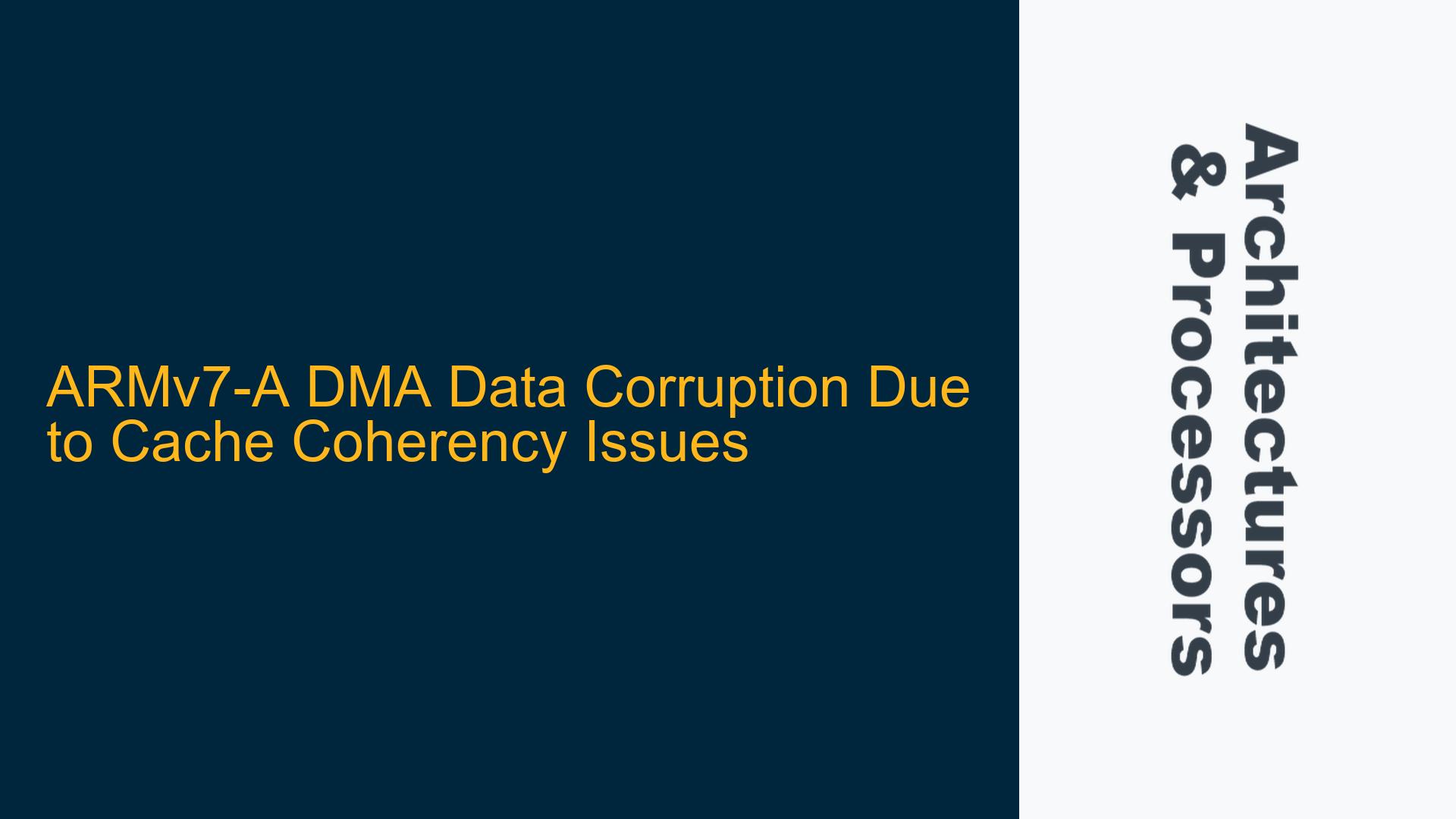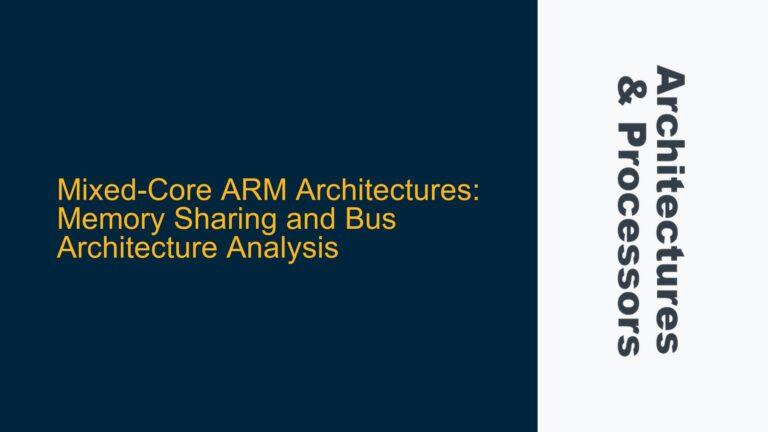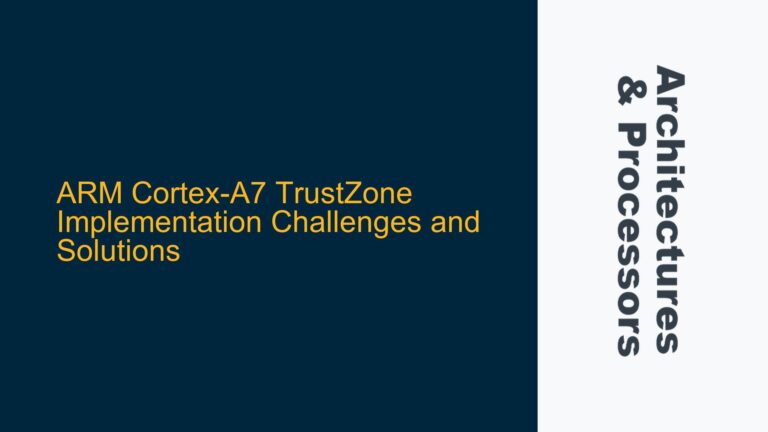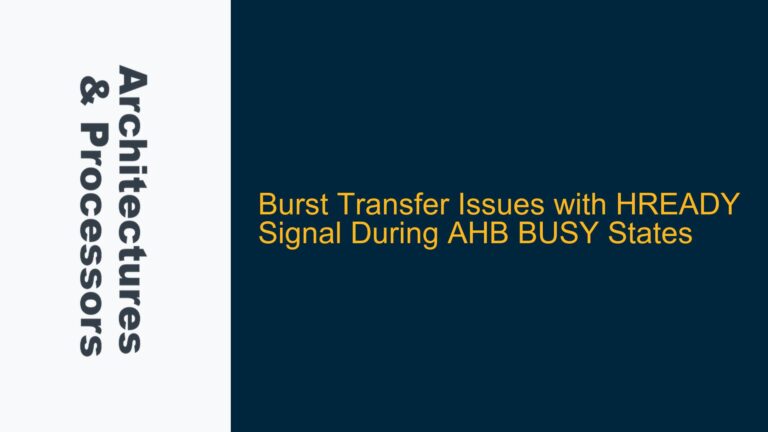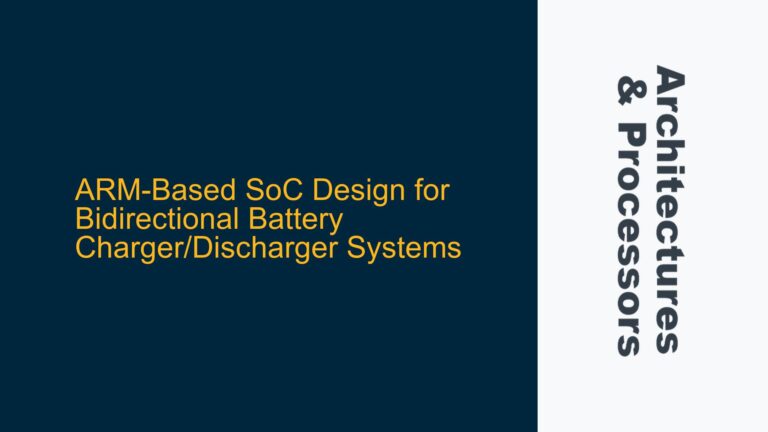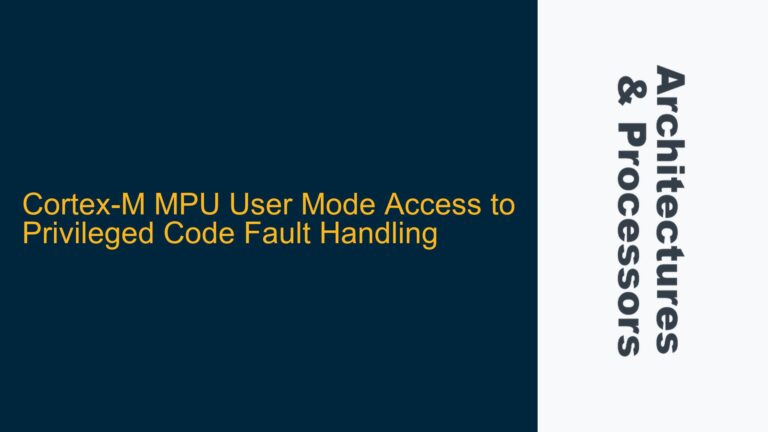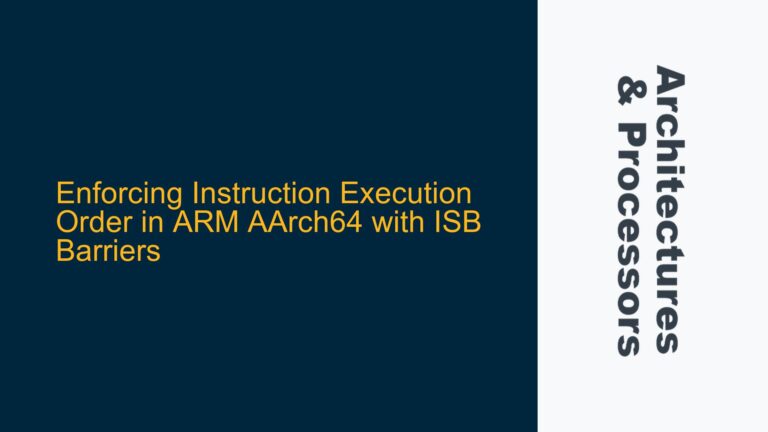ARM Cortex-A Cache Coherency Problems During DMA Transfers
In ARMv7-A based multiprocessor systems, ensuring cache coherency during Direct Memory Access (DMA) operations is critical for reliable data transfers. The issue described involves a scenario where a DMA engine (SDMA) occasionally copies stale data from memory, despite the use of cache cleaning and Data Synchronization Barriers (DSBs). This problem manifests approximately once in every thousand transfers, indicating a subtle but critical timing or synchronization issue in the hardware-software interaction.
The core of the problem lies in the interaction between the CPU, cache, and DMA engine. When the CPU writes data to a memory region marked as write-back cacheable, the data resides in the cache until it is explicitly flushed to main memory. If the DMA engine accesses the same memory region before the cache is properly flushed, it may read outdated data. This is particularly problematic in systems where the DMA engine operates independently of the CPU cache, as is common in ARMv7-A architectures.
The ARMv7-A architecture provides mechanisms to ensure cache coherency, such as cache cleaning and data synchronization barriers. However, improper use or timing of these mechanisms can lead to the described issue. The DSB instruction ensures that all memory operations before the barrier are completed before any subsequent operations begin. However, if the cache cleaning operation is not properly synchronized with the DMA operation, the DMA engine may still access stale data.
Memory Barrier Omission and Cache Invalidation Timing
The primary cause of the issue is likely related to the timing and sequence of cache cleaning and memory barrier operations. The ARMv7-A architecture requires explicit cache management when dealing with DMA operations to ensure that the DMA engine accesses the most recent data. The following are potential causes of the observed problem:
-
Insufficient Cache Cleaning: The cache cleaning operation may not be covering the entire memory region being accessed by the DMA engine. If only a portion of the cache is cleaned, the DMA engine may still access stale data from the uncleaned portion.
-
Improper Use of Data Synchronization Barriers: The DSB instruction ensures that all memory operations before the barrier are completed before any subsequent operations begin. However, if the DSB is placed incorrectly, it may not guarantee that the cache cleaning operation is fully completed before the DMA operation starts.
-
Cache Invalidation Timing: The timing of cache invalidation relative to the DMA operation is critical. If the cache is invalidated too early or too late, the DMA engine may access stale data. This is particularly challenging in systems with high memory traffic or complex memory hierarchies.
-
Memory Attribute Mismatch: The memory attributes for the region being accessed by the DMA engine must be consistent with the cacheability settings. If the memory region is marked as write-back cacheable but the DMA engine expects non-cacheable or write-through memory, data corruption can occur.
-
DMA Engine Configuration: The DMA engine itself may be misconfigured, leading to incorrect memory access patterns. For example, if the DMA engine is not configured to respect cache coherency protocols, it may bypass the cache and access stale data directly from memory.
Implementing Data Synchronization Barriers and Cache Management
To resolve the issue, a systematic approach to cache management and memory barrier usage is required. The following steps outline a detailed troubleshooting and solution process:
-
Ensure Complete Cache Cleaning: Before initiating the DMA transfer, ensure that the entire memory region being accessed by the DMA engine is cleaned from the cache. This can be achieved using the
DCACHE_CLEAN_BY_MVA(Data Cache Clean by Modified Virtual Address) operation. The cleaning operation should cover the entire range of memory addresses involved in the transfer. -
Proper Placement of Data Synchronization Barriers: Place a DSB instruction immediately after the cache cleaning operation to ensure that all cache cleaning operations are completed before the DMA transfer begins. This ensures that the DMA engine accesses the most recent data from memory.
-
Cache Invalidation After DMA Transfer: After the DMA transfer is complete, invalidate the cache for the memory region accessed by the DMA engine. This ensures that any subsequent CPU accesses to the memory region fetch the most recent data from memory, rather than stale data from the cache. Use the
DCACHE_INVALIDATE_BY_MVA(Data Cache Invalidate by Modified Virtual Address) operation for this purpose. -
Verify Memory Attributes: Ensure that the memory attributes for the region being accessed by the DMA engine are consistent with the cacheability settings. The memory region should be marked as write-back cacheable if the CPU is expected to cache the data, and the DMA engine should be configured to respect cache coherency protocols.
-
DMA Engine Configuration: Verify that the DMA engine is correctly configured to respect cache coherency protocols. This may involve setting specific bits in the DMA engine’s control registers to ensure that it interacts correctly with the cache.
-
Use of Memory Barriers in Multi-Core Systems: In multi-core systems, additional memory barriers may be required to ensure coherency across all cores. The
DMB(Data Memory Barrier) instruction can be used to ensure that memory operations are visible to all cores in the system. -
Testing and Validation: After implementing the above steps, thoroughly test the system to ensure that the issue is resolved. This may involve running the DMA transfer operation thousands of times to verify that the data corruption issue no longer occurs.
-
Performance Considerations: While ensuring cache coherency is critical, it is also important to consider the performance impact of cache cleaning and invalidation operations. Excessive use of these operations can lead to performance degradation. Therefore, it is important to optimize the use of cache management operations to balance performance and reliability.
-
Debugging Tools: Utilize debugging tools such as ARM’s CoreSight or other trace and debug tools to monitor cache and memory operations. These tools can provide valuable insights into the timing and sequence of cache and memory operations, helping to identify and resolve coherency issues.
-
Documentation and Best Practices: Refer to the ARM Architecture Reference Manual (ARM ARM) for detailed guidance on cache management and memory barrier usage. Chapter D7.5.1 of the ARMv7-A/R ARM provides examples and best practices for using data synchronization barriers and cache management operations.
By following these steps, the issue of DMA data corruption due to cache coherency problems can be effectively resolved. The key is to ensure that cache cleaning and invalidation operations are properly synchronized with DMA operations, and that memory barriers are used correctly to enforce the necessary ordering and visibility of memory operations.
In conclusion, cache coherency in ARMv7-A systems, especially during DMA operations, requires careful attention to detail. Proper use of cache management operations, memory barriers, and thorough testing are essential to ensure reliable data transfers. By addressing the potential causes and implementing the recommended solutions, the described issue can be effectively mitigated, leading to a more robust and reliable system.
